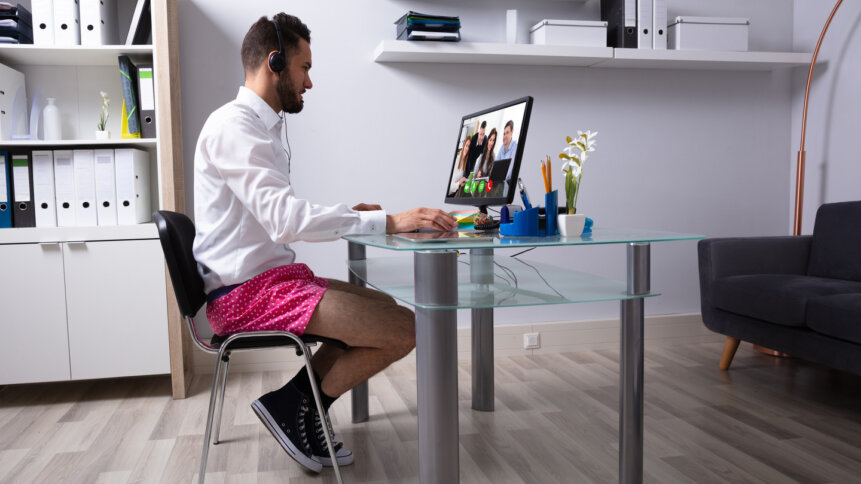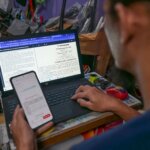Slack boss advises against video conferencing on office visits

“Work smarter, not harder” has been a business mantra for effective time management for years. It’s a mantra that came into its own during the Covid-19 pandemic, when technology like cloud infrastructures and video conferencing software helped push remote working front and center, and kept the lights on in many businesses.
But now that at least the most recent and most deadly stages of Covid are behind us, we’re left with a working environment that’s been changed almost forever. While fully remote working was shown to be entirely possible, most businesses have snapped back to a half-and-half approach known as hybrid working. That translates as “mostly remote, but with some time in the office.”
I’m here – now what?
But the question of what we do while we’re in the office is becoming a central question in time management and efficiency studies. If a day in the office is spent doing essentially the same things as a day working remotely, like video conferencing, the logic runs, why are we demanding staff commute into the office at all? Why not go entirely remote at that point?
There are things that can only be done face to face in an office, or that are best done that way – so, arguably, when hybrid staff are in the office, they should be focusing on those things, achieving goals that can’t be achieved remotely, and not conducting business as usual, video conferencing the Saskatchewan office.
That’s an argument that’s been taken up by Stewart Butterfield, Chief Executive at Slack – one of the key business tools that helped ensure a smooth continuation of business during the pandemic.
Butterfield is not suggesting that office days should be solely about seeing other people – quite the reverse. But he is adding his voice to the growing chorus of business leaders who are challenging the time value of otherwise traditional office practices.
The idea of travelling into an office with boxed-off space, simply to slip on headphones and start video conferencing with people who didn’t travel to a similar boxed-off space seems to him like a waste of time and resources. Those meetings can be done from your own comfort zone – at home or wherever you normally work remotely. Office time, he told the UK’s BBC, should be for the office people.
Another meeting that should have been an email…
He’s also gunning for traditional business practices like round-the-table status updates and the potential garden of tedium that is the Powerpoint presentation. Adopting an idea from Jeff Bezos of Amazon, Butterfield is supporting the idea of everyone in a meeting reading briefing notes at the start of meetings, rather than having to follow along with such presentations as a better way of getting everyone up to speed and “working smarter, not harder.”
“There probably are 20% or 30% (of meetings) that don’t actually have to be meetings, that would be more effective with written communication,” he told the BBC. That’s an idea already popular across social media, where the meme “I survived another meeting that should have been an email” is extremely popular.
Asynchronous work is another relatively new trend gaining respectability, and again, it’s something Butterfield is happy to support.
“People go around the room and giving their status update. If you can do that asynchronously, and I can record mine at 08:17, and then listen to yours at 09:53 or whatever – that is itself worth a lot,” he explained. “I think the place for most teams to invest in is how they do asynchronous work, because we’re humans.”
Each to their own
The shift to an ever more flexible, but increasingly smart way of maximizing our work-time has quite some way to go, and will always have to factor in individual learning and working styles.
Some people will cherish the traditional office environment on the principle that they actually enjoy the presence of other human beings. Others prefer to share their lives with a cat, their own bathroom, and a bag of potato chips the size of a human head. Each to their own. The key for effective time management in the “office” of the future is making sure that both spaces and software are optimized to let people get the most done in an environment that’s most comfortable and conducive to them.
Slack itself is being evolved from its initial, slightly somber and structured format into something looser and more friendly, with a “social club” feel, to help teams spend longer in the app, collaborating and working face-to-face.
Three-dimensional advice
“The best thing we can do is create a comfortable environment for people to come together and actually enjoy themselves,” Butterfield explained, describing the shift.
It will also remain true that the degree to which remote and hybrid working can be folded into the mix will often depend not just on the needs on the company, but also on the needs of the worker. If you’re in your first job, or your first experience in a particular role, the chances are that you’ll want significantly more physical office interaction, so you can absorb the wisdom of your peers and managers first hand. Slack can be a great tool to seek both synchronous and asynchronous advice – and you can get it in a form to which you can permanently refer – but sometimes, there’s no substitute for real-world, three-dimensional, next-desk-over advice and interaction.
But overall, Butterfield and other business leaders are not advocating either for an entirely remote or an entirely office-based work model. They’re advocating for increasing flexibility, that allows hybrid workers, when they’re in the office, to make the most of their work-time in that environment, rather than ‘wasting’ the opportunity of being on the spot with colleagues shackled to laptops and headsets.










